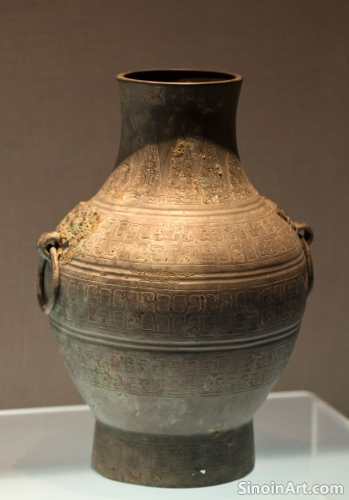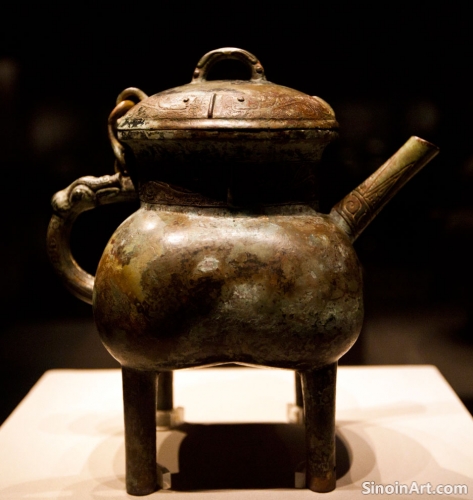Bronze Ware and the Development of Ancient Chinese Scientific Thought: Experimentation, Observation, and Knowledge
|
While often celebrated for their artistic and practical uses, bronze objects also played a role in the development of ancient Chinese scientific thought, providing opportunities for experimentation, observation, and the codification of knowledge. The interplay between artistic creation and scientific understanding helped to shape the development of technology and also the general understanding of the natural world.  The creation of bronze objects required a sophisticated understanding of metallurgy, alloys, and casting techniques, and ancient bronze workers developed a systematic approach to experimentation and innovation in their work. The complex techniques that were developed for working with bronze helped to lay the foundation for the study of materials science.  Bronze tools and instruments, such as astronomical devices, measuring instruments, and medical implements, also facilitated the collection of data and the development of theories about the natural world. The practical uses of bronze helped to shape the overall understanding of the universe that developed in ancient China.  The documentation and preservation of knowledge, often through inscriptions on bronze objects, helped to create a body of knowledge that was transmitted to future generations, highlighting the importance of observation, experimentation, and the creation of reliable and testable information. The use of bronze as a recording medium helped to create a system that was both durable and reliable. |
Tag : bronze science, Chinese experimentation, ancient knowledge, metalworking, scientific instruments
Related information
- The Evolution of Bronze Vessel Forms in Ancient China: From Simplicity to Complexity and Back Again
- The Enduring Power of Chinese Bronze Ware: A Timeless Legacy of Art, Culture, and History
- The Influence of Tang Dynasty Aesthetics on Later Bronze Ware Design
- Bronze Ware and the Development of Ancient Chinese Technology: Innovation and Practical Applications
- Bronze Ware and the Development of Ancient Chinese Cartography: Maps and Measurement
This article explores the evolution of bronze vessel forms in ancient China, highlighting the shift from simple early shapes to more complex and ornate designs, and then later, a move back to simpler forms, reflecting changes in technology, aesthetics, and cultural practices.
This article reflects on the enduring power of Chinese bronze ware, emphasizing its timeless beauty, technical mastery, cultural significance, and its continuing ability to inspire awe and curiosity around the world.
This article explores the influence of Tang Dynasty aesthetics on later bronze ware design, highlighting the shift toward more refined forms, delicate decorations, naturalistic motifs, and how these changes reflected a broader change in cultural tastes.
This article explores the role of bronze in the development of ancient Chinese technology, highlighting its use in agriculture, irrigation, and warfare, and demonstrating how the material enhanced practical and technical capabilities.
This article explores the use of bronze in ancient Chinese cartography, highlighting its role in creating surveying tools, measuring instruments, and other devices used in mapmaking, and demonstrating its importance in facilitating the creation of accurate geographical records.